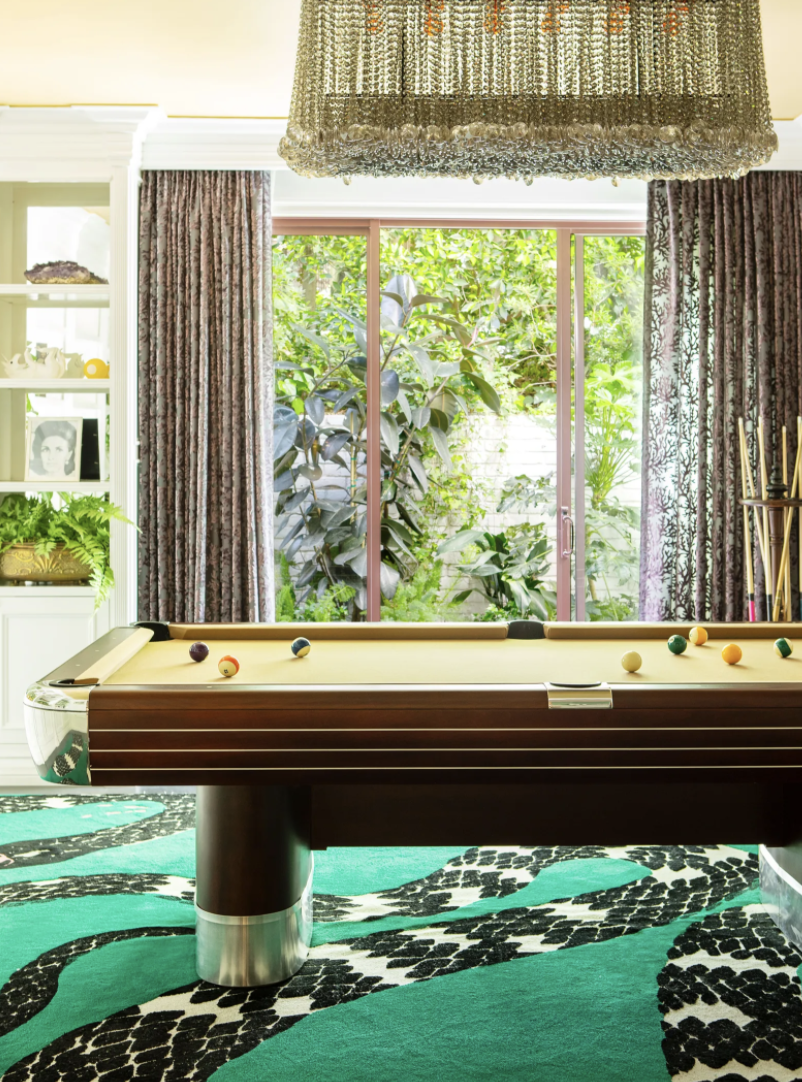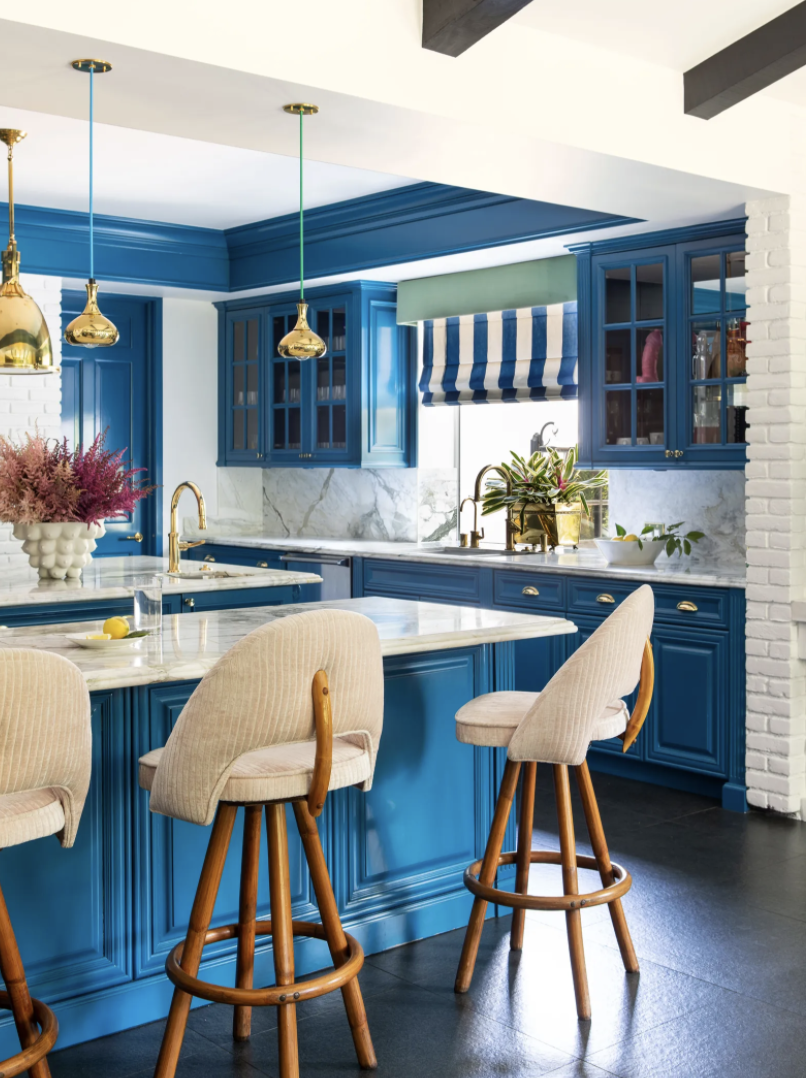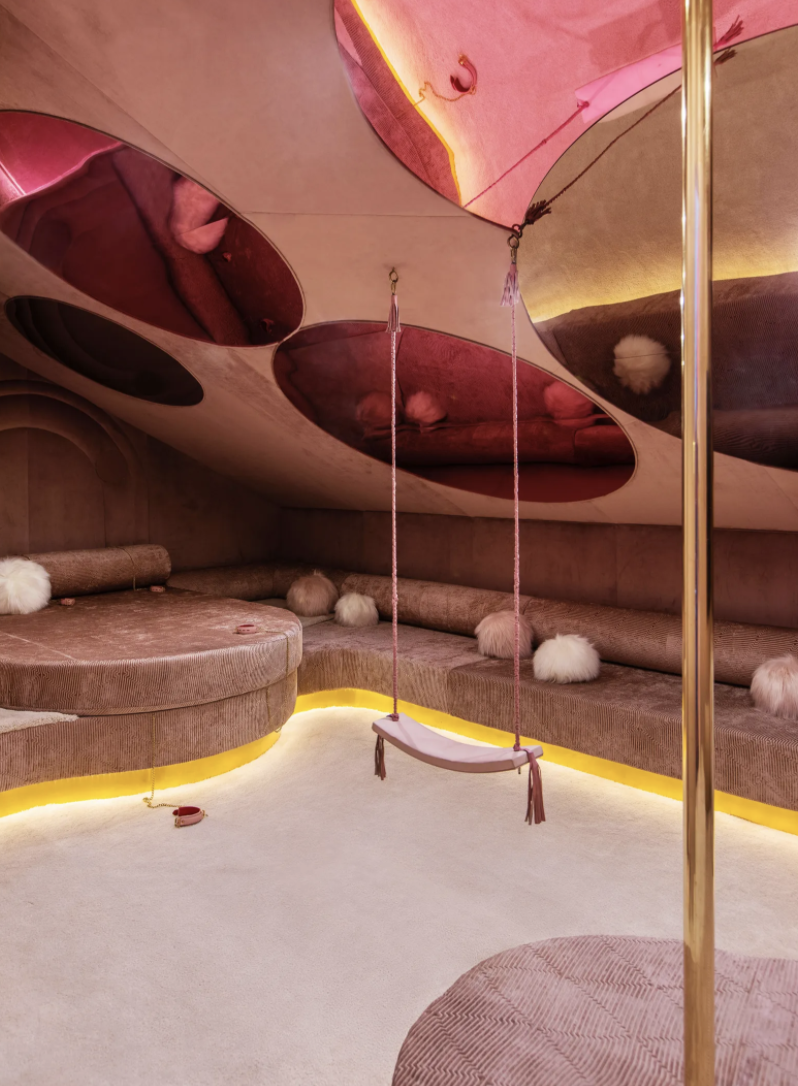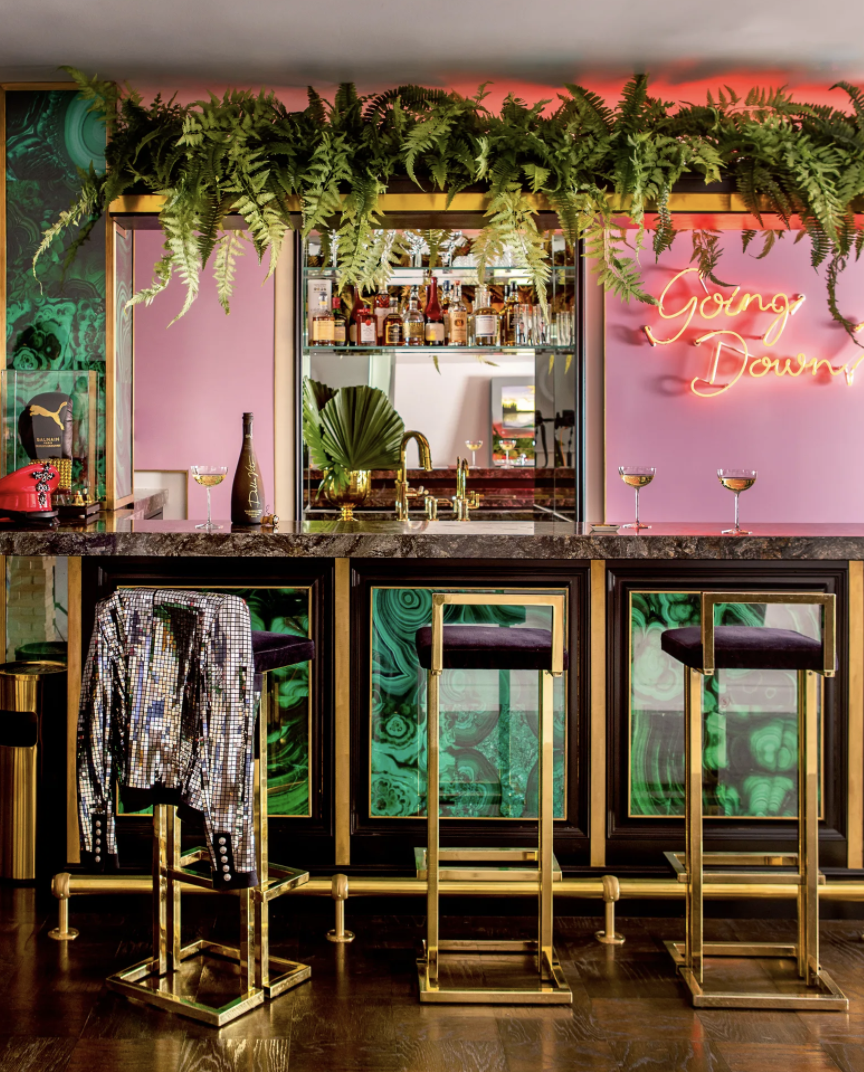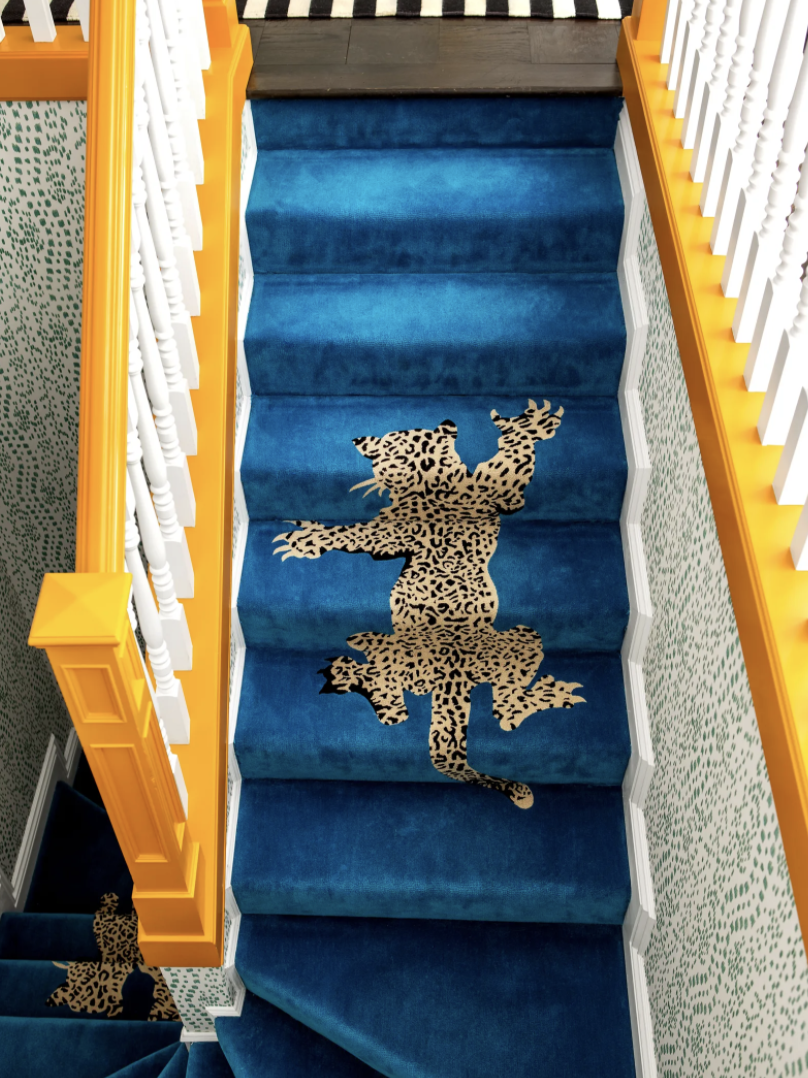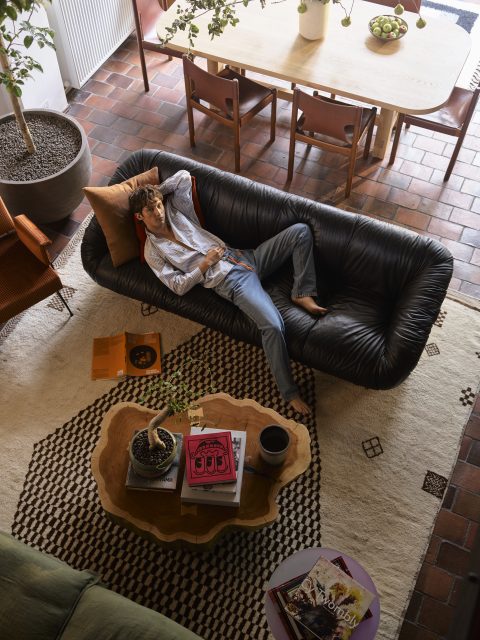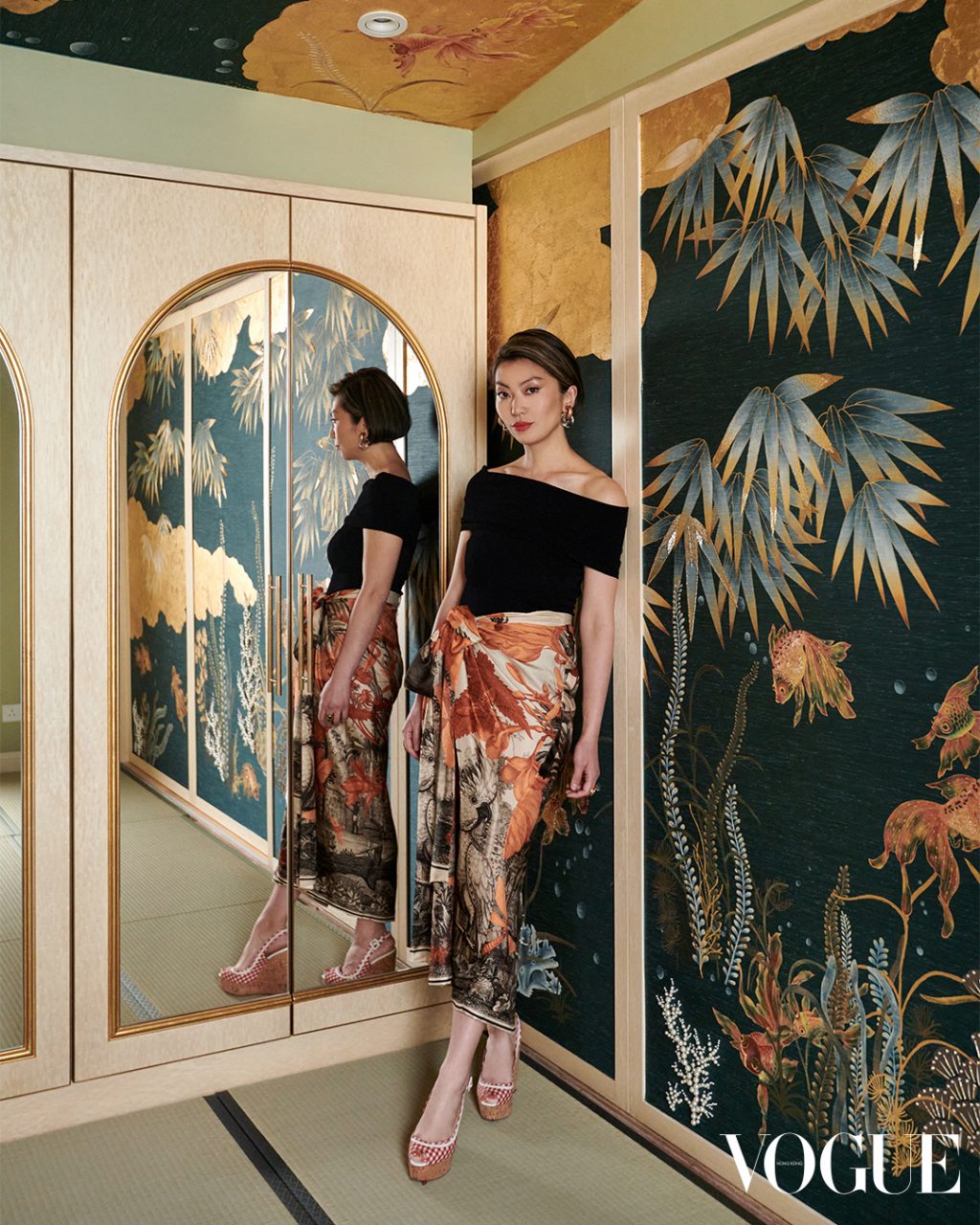Fabulous genes are not the only inheritance that supermodel and actress Cara Delevingne received from her mother, Pandora. “She used to tell us, ‘If you say you’re bored, then you are boring,’ ” recalls Cara, the youngest of the three Delevingne sisters. That kernel of wisdom clearly stuck—Cara Delevingne is anything but boring, as her private Los Angeles pleasure dome ably attests. The house feels like Saint-Tropez meets Coney Island meets Cotswolds cottage meets Monte Carlo meets butch leather bar. It’s a heady brew, to be sure, but Delevingne takes it all in stride.
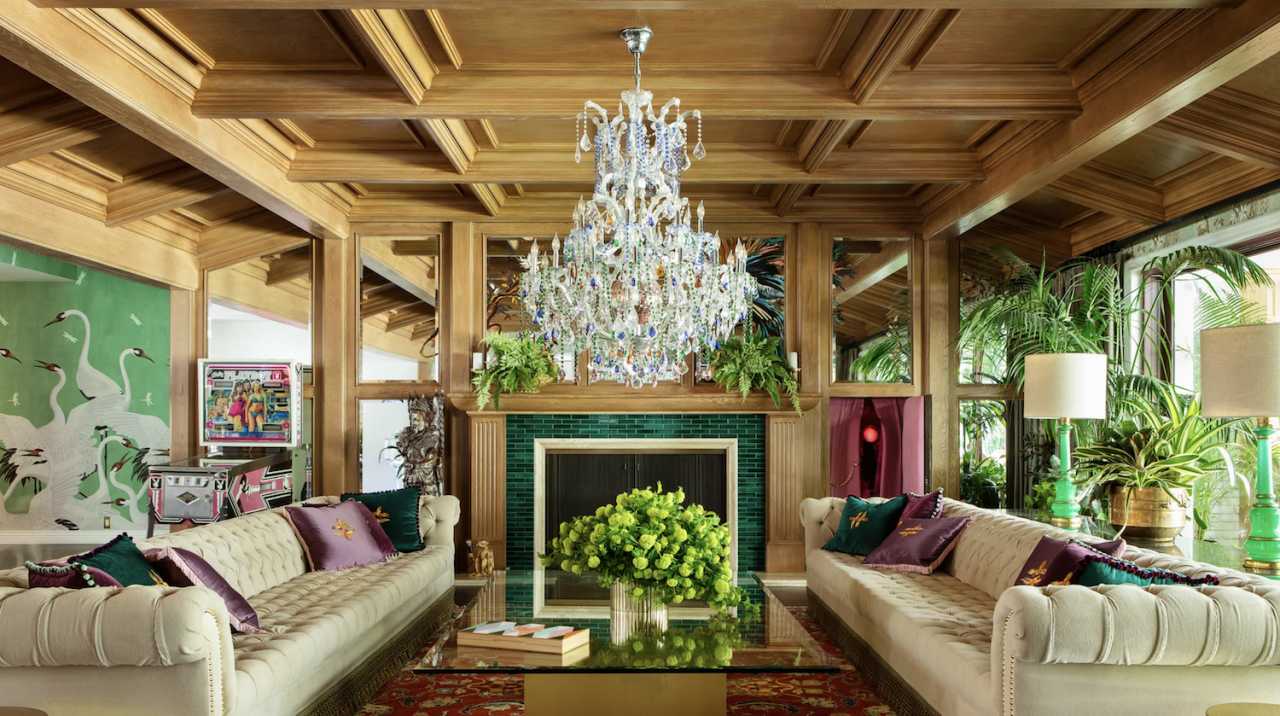
Bini placed a disco ball inside an existing chandelier and reimagined the previous owner’s furnishings with new fabrics and trims. The painted mirrors are by artist Sarah Chuldenko, and the rebirth canal (right of fireplace) was created by artist Stephen Reynolds.
Photo: Laure Joliet
“My work requires me to put on many different hats and costumes. I love slipping into these various characters, so I wanted my home to reflect lots of different themes and moods,” says the unapologetic voluptuary.
Architect Nicolò Bini of Line Architecture, Delevingne’s accomplice/enabler in decorative extravagance (see AD, September 2019), fulfilled his client’s mandate with gusto. First there’s the nature theme, explicated in countless design gestures: walls sheathed in a Gucci wallpaper of overscaled herons; a massive snake carpet in the billiards room and a climbing-leopard carpet on the stair to the upper-floor fun house; a flock of bird sculptures by Mexican artist Sergio Bustamante; and a king’s ransom in ferns, palms, topiaries, and other houseplants.
Then there’s the fun-and-games theme, represented by a tented poker room; a jolly ball pit; a display wall of kooky hats and a costume room for dress-up parties; and two trampolines set into the ground near the floaty-stocked pool. “I love games—charades, beer pong, poker, Cards Against Humanity, tug-of-war, whatever feels fun. When my friends come over, the house turns into an obstacle course. It’s like an indoor/outdoor playground by way of Alice in Wonderland,” Delevingne observes. “If I’m having a bad day, I just hop in the ball pit. You can’t really cry in a ball pit,” she adds.
The white-brick residence, nominally English-country style, was built in 1941 for members of the Von der Ahe family, founders of the Vons supermarket chain. A deeply religious clan, the Von der Ahes are said to have hosted Pope John Paul II at the house when he visited L.A. in 1987. It’s unclear what His Holiness would have made of Delevingne’s vagina tunnel, a secret passageway concealed behind a low, painted panel, which leads from the living room to an adjacent bunk room. One enters the so-called rebirth canal through a vulval soft sculpture (think Judy Chicago on acid) and then proceeds to crawl out of a round washing-machine door suggestive of a rectum.
The pontiff also might have done a double take, if not a full-on spit take, at the sight of Delevingne’s attic party bunker, replete with a mirrored ceiling, a tasseled swing, serpentine soft seating inspired by the Courrèges logo, wrist and ankle restraints, and, of course, the obligatory stripper pole. “Cara is a creature of pure delight. This place is her ultimate expression of home—a Cara-style fantasy filled with references to the many things that turn her on,” Bini explains, emphasizing the joy he found in indulging the madcap desires of his free-spirited client and her circle of international glamour-pusses.
Yet despite all the blingy accoutrements—the Chanel surfboard, the David Bowie memorial bathroom, the Chemical X bull’s-eye sculpture made of thousands of Ecstasy pills suspended in acrylic—Delevingne insists that her house is more than simply a louche theme park. “It still feels like a home. There’s a proper dining room and living room and a great kitchen. But it’s also a kind of journey. The deeper in you go, the more treasures you discover,” she says.
One of the most fascinating aspects of the renovation is the fact that Delevingne and Bini kept much of the previous owner’s furniture, an unlikely prospect given the complexion of the erstwhile decor. “There was a goth-glam quality to all of it—lots of black fabrics and finishes and dark, moody spaces,” Bini recalls. But his client was not deterred. New upholstery treatments, bespoke details, fresh paint, and a few strategic architectural additions (like the living room’s new coffered ceiling) completely transformed the spirit of both the furnishings and the rooms they inhabit. “It felt wasteful to toss everything out. Sometimes sustainability just means working with what you have,” Delevingne notes. “The big crystal chandelier in the living room wasn’t exactly my thing, so we put a disco ball in the middle of it and added colored lights. All of a sudden it feels like me.”
Ultimately, that’s the success of Casa Cara—the house feels like a perfect reflection of its owner, in all of her gorgeousness, naughtiness, and outré humor. “It’s the design equivalent of a jaw drop,” Delevingne concludes. “There’s no mistaking whose house you’re in.”
Photography: Laure Joliet
Styling: Amy Chin
Editor
Mayer RusCredit
Lead Image: Photography by Laure Joliet

